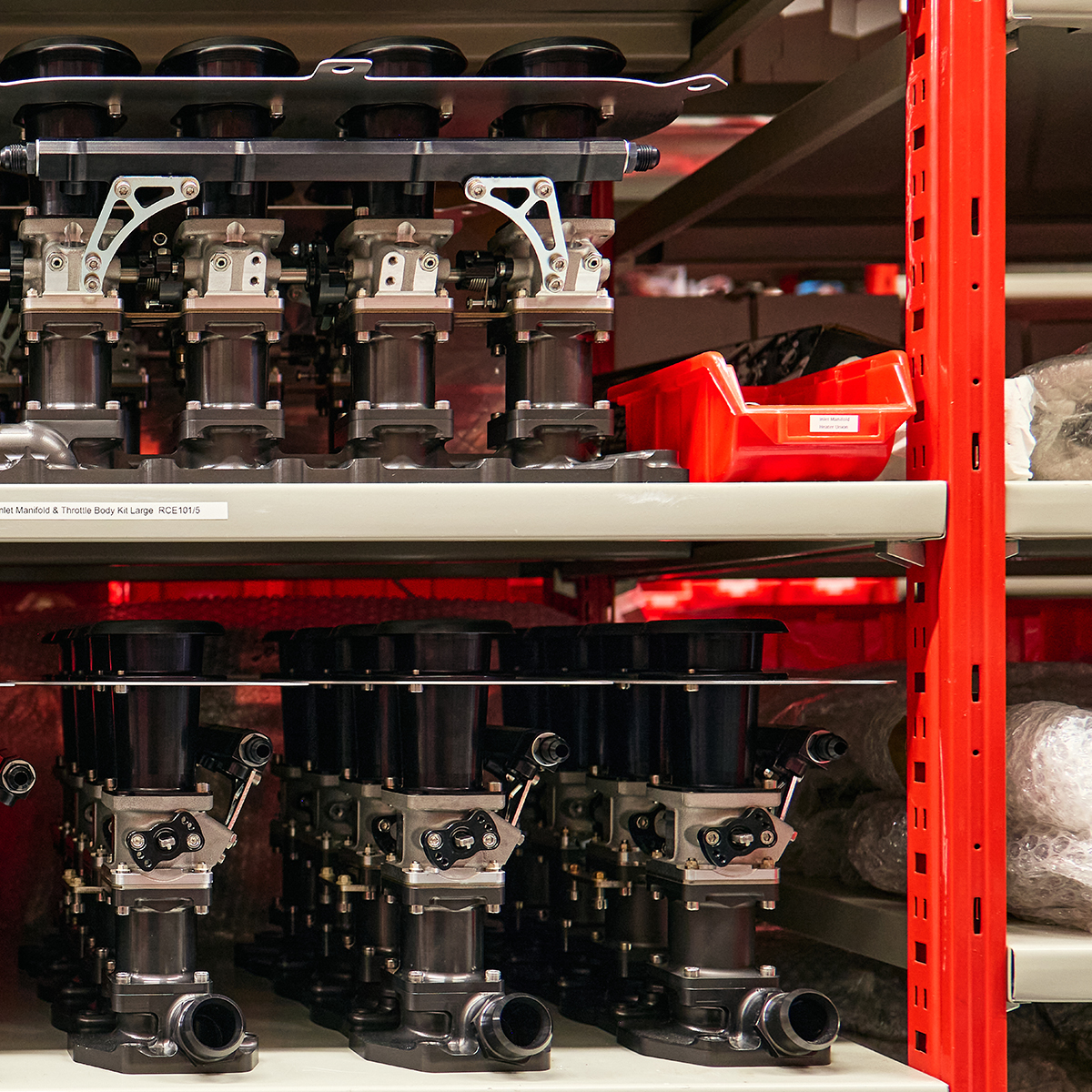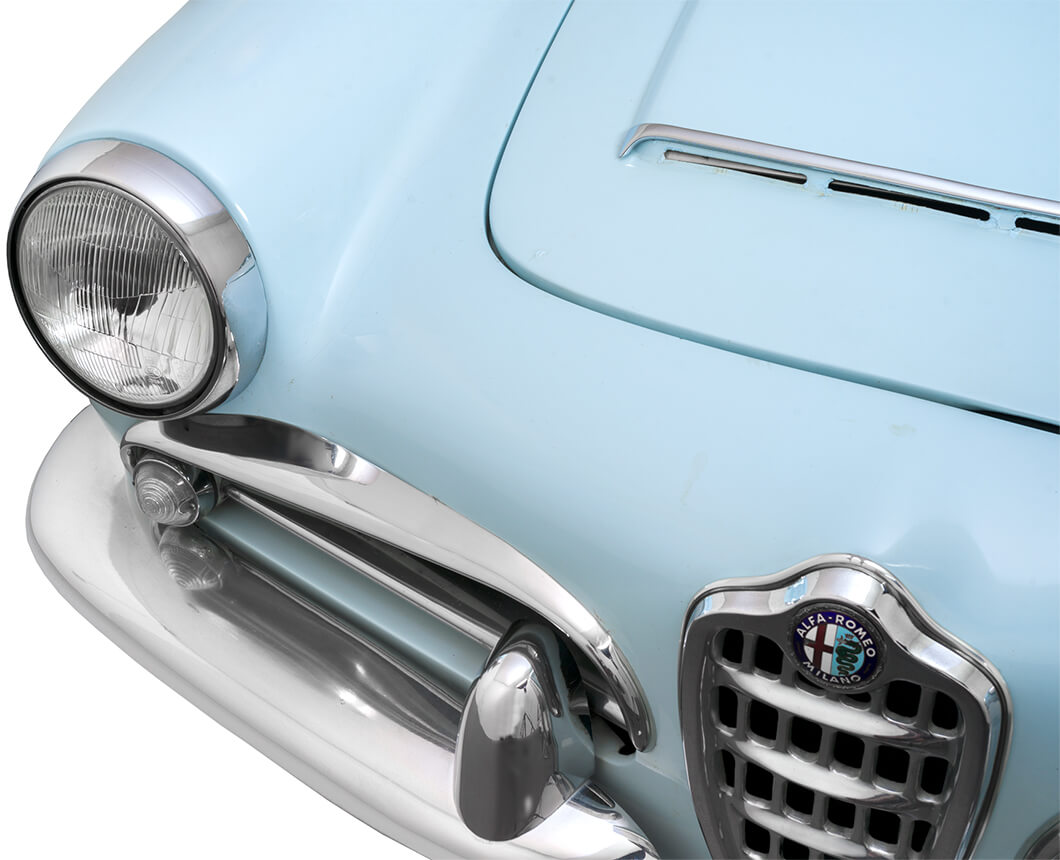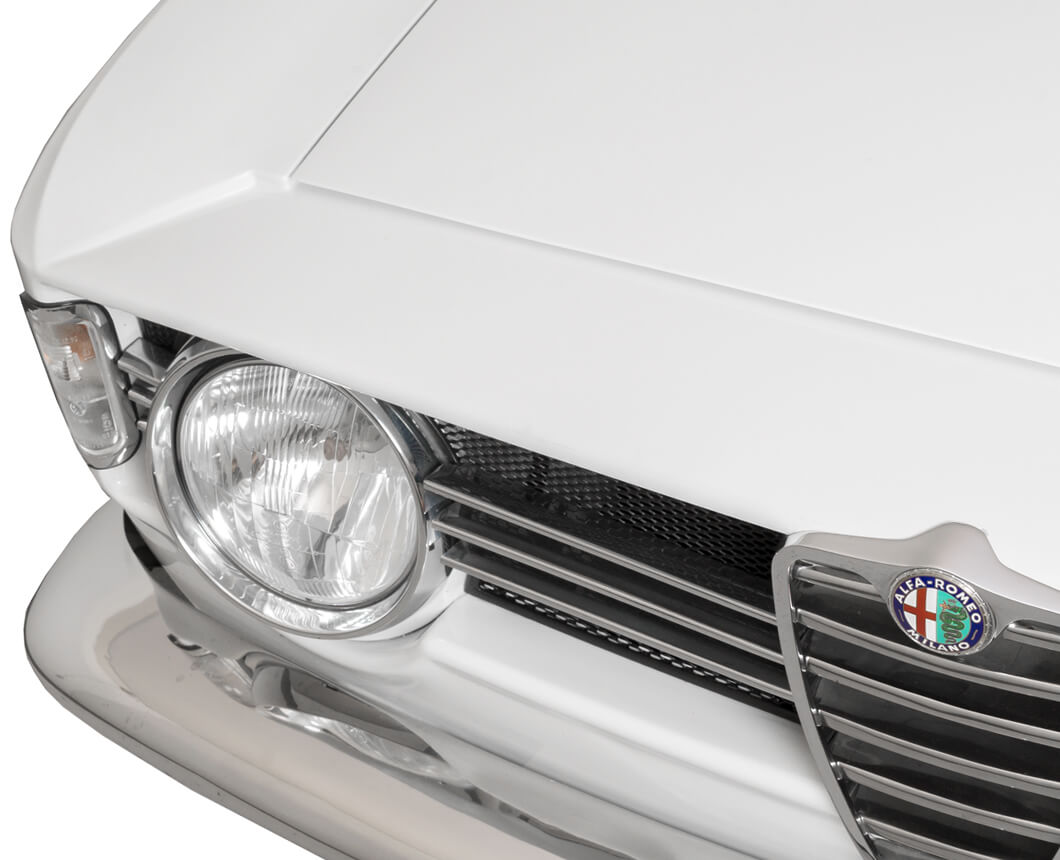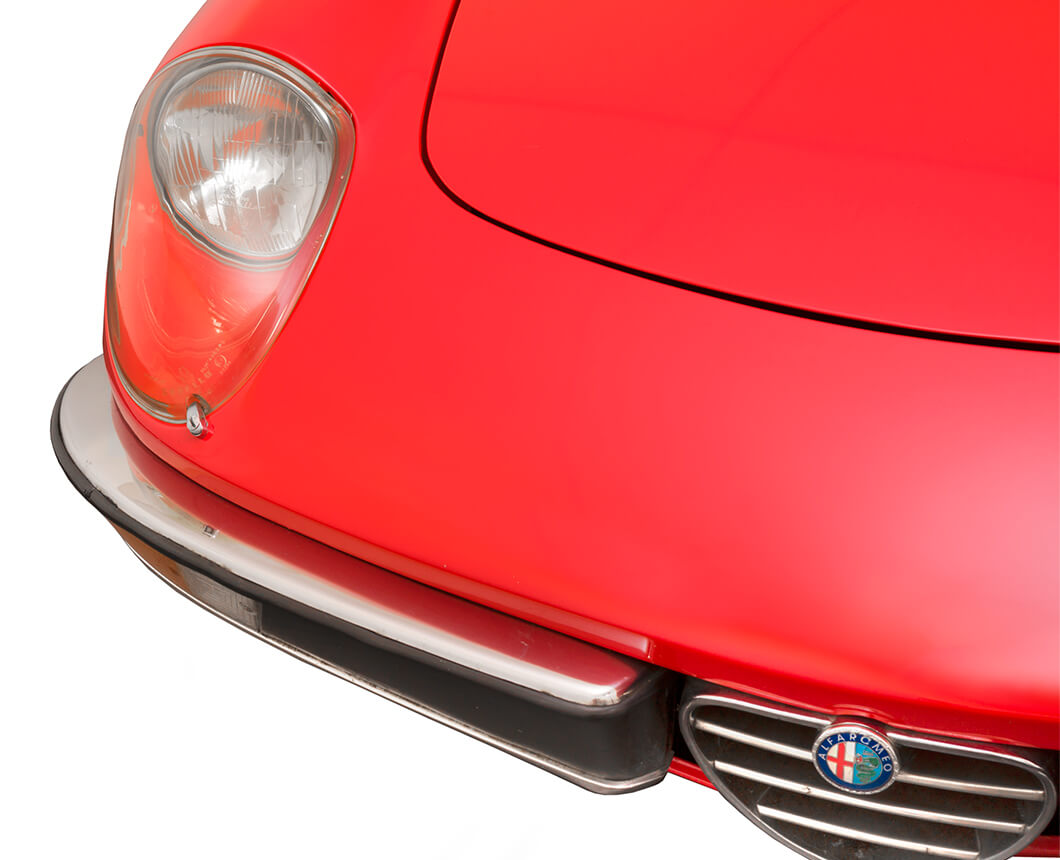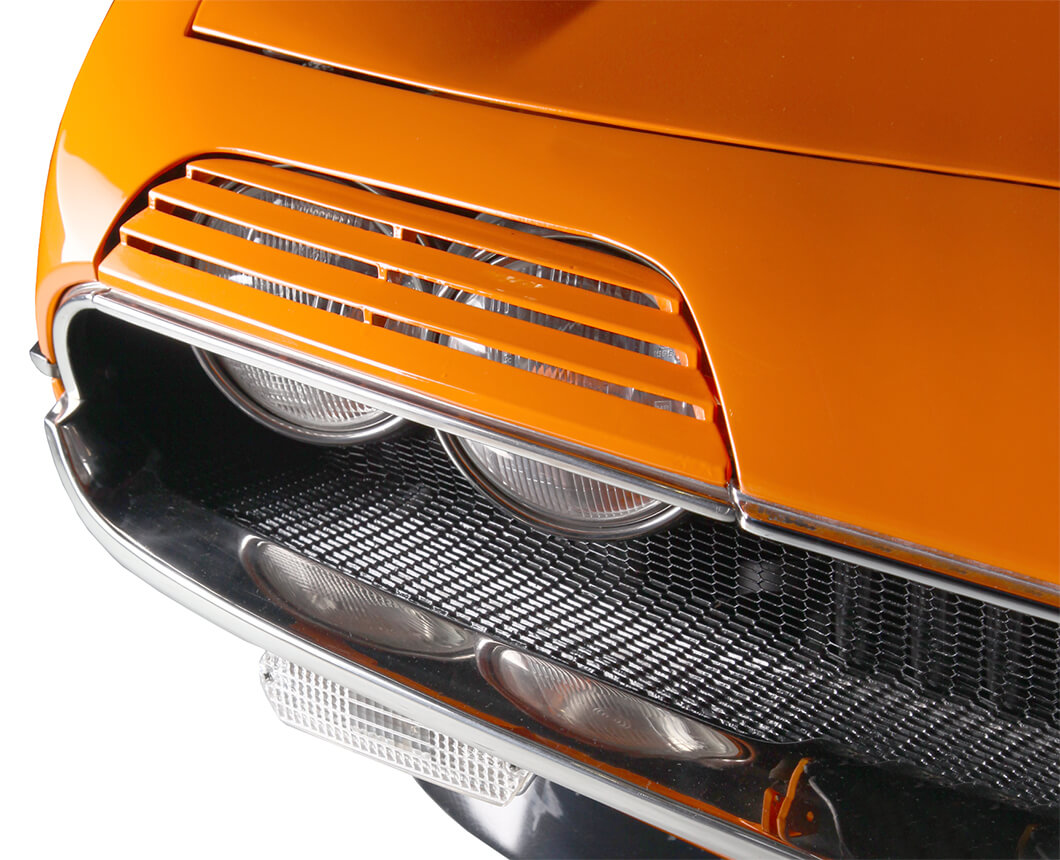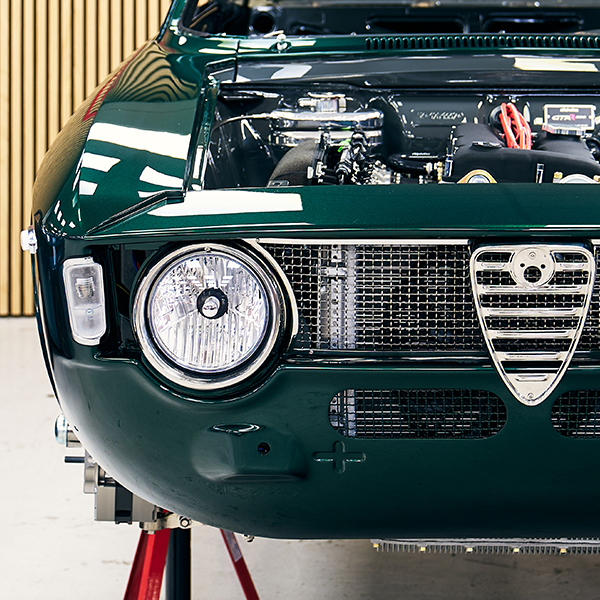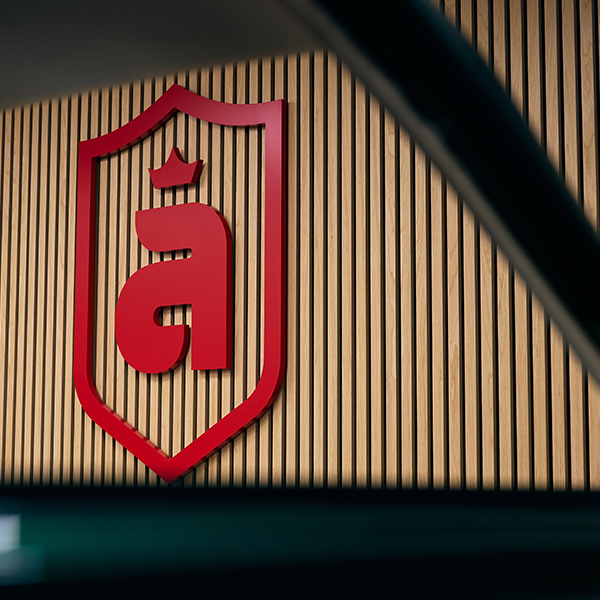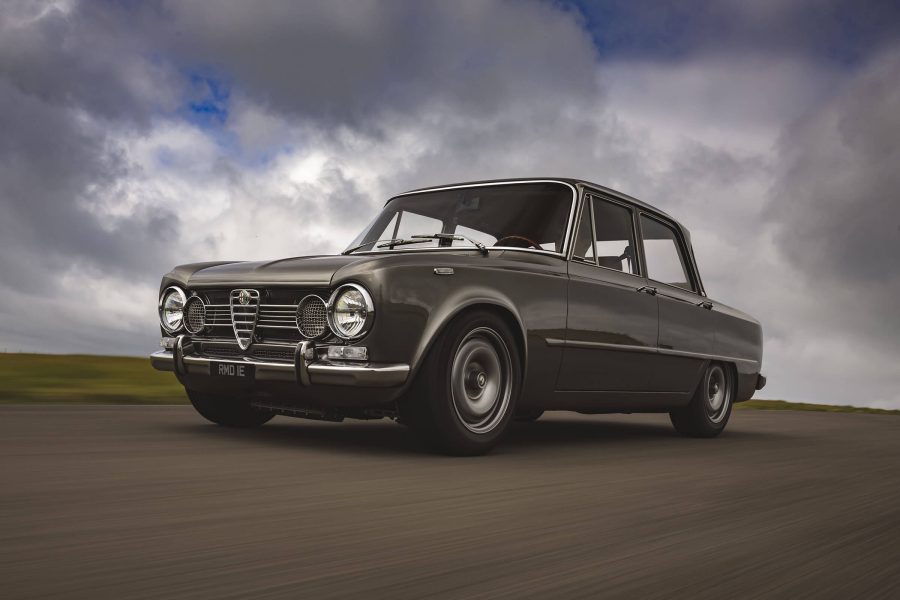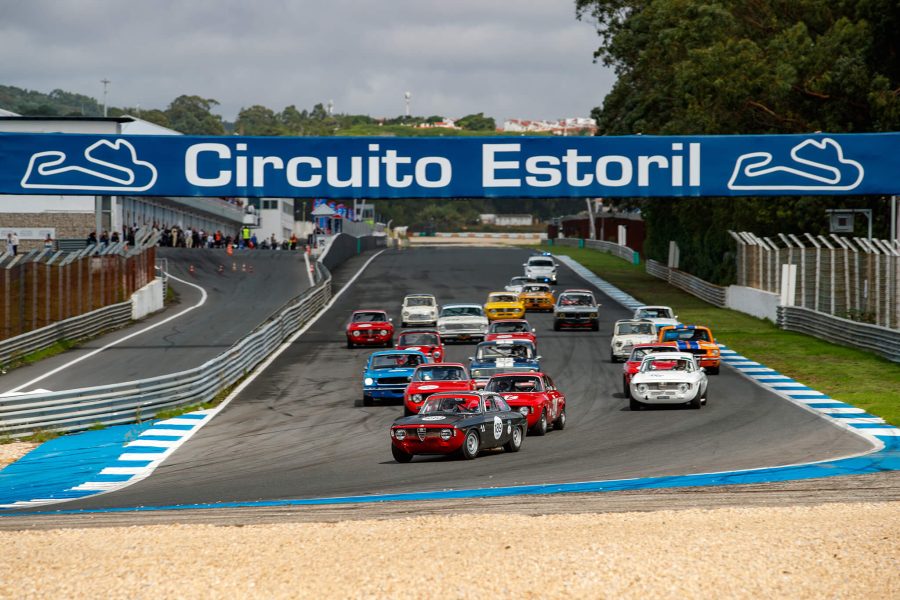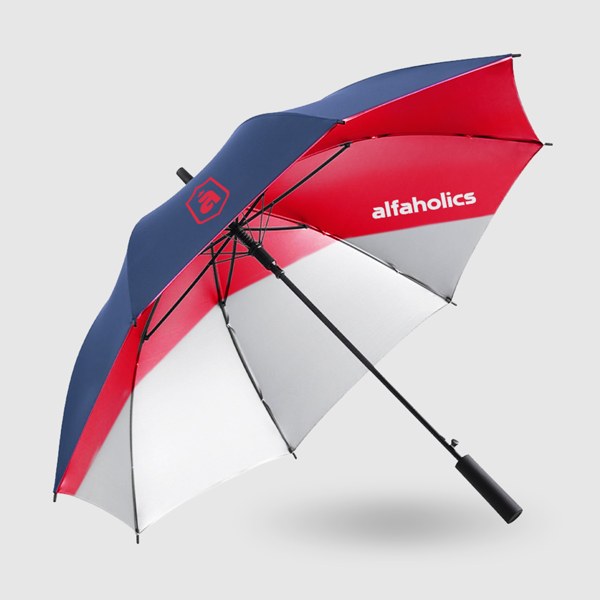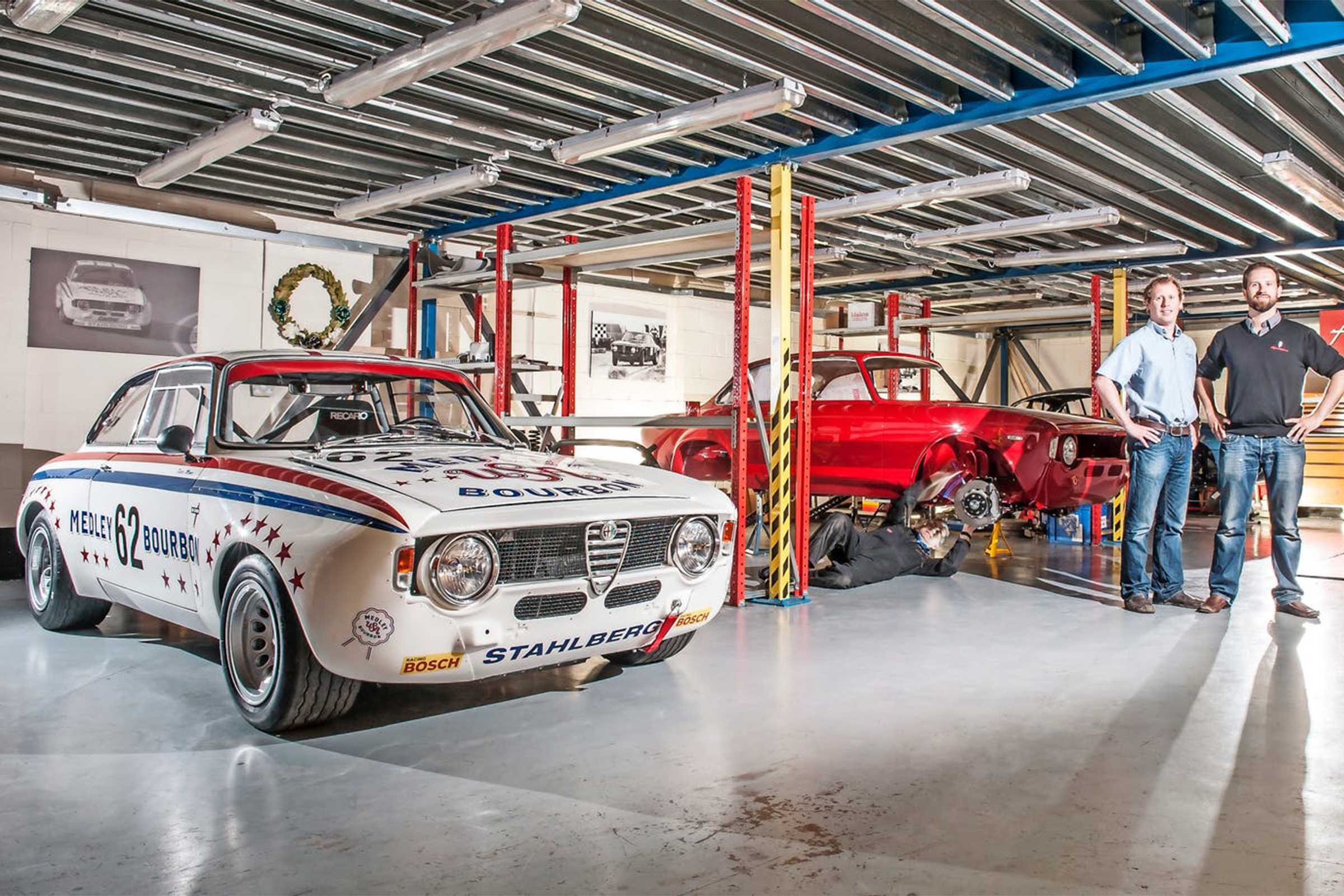
Epic Restoration: 1965 Alfa Romeo Giulia Sprint GTA Corsa
Restoring a racing car is hard to do in an authentic but competitive manner – but add in a short deadline, and the pressure is ramped even higher
Classic Car Magazine
Words: Nigel Boothman
Photography: Laurens Parsons
They say there’s no such thing as an old racing car. Either it’s old, with lots of original features and period charm but no chance of making a safe return to the track, or it’s a racing car, resembling something old but rebuilt from new parts. What happens when you need it to be both?
We had to build it to be the fastest it could have been, in period specification
That was the challenge taken on by Max Banks and the team at Alfaholics. Max and his father Richard found a GTA racer in a UK collection with parts from Alfa’s competition department, Autodelta, but with history yet to be confirmed. They took a punt, and after research found it was the car that won the 1974 German touring car championship, the Deutsche Rundstrecken Pokal (the German Racing Cup).
The car had an unusually long and busy race career with the Hamburg-based Stahlberg team and became very much the personal mount of mechanic-turned-race champion, Dieter Meyer. With Meyer’s input the car’s identity was confirmed beyond doubt. Banks was able to find a perfect owner for the car in American racer and Alfista Bill Byrne, but there remained the question of what to do next.
‘We wanted to return it to its famous specification and livery from the 1974 season,’ says Banks.
‘That would have been quite easy if it was going to be a museum piece. But Bill wanted to go racing. We had to build it to be the best and fastest it could have been, in period specification, and retaining as much as possible of what we found.’
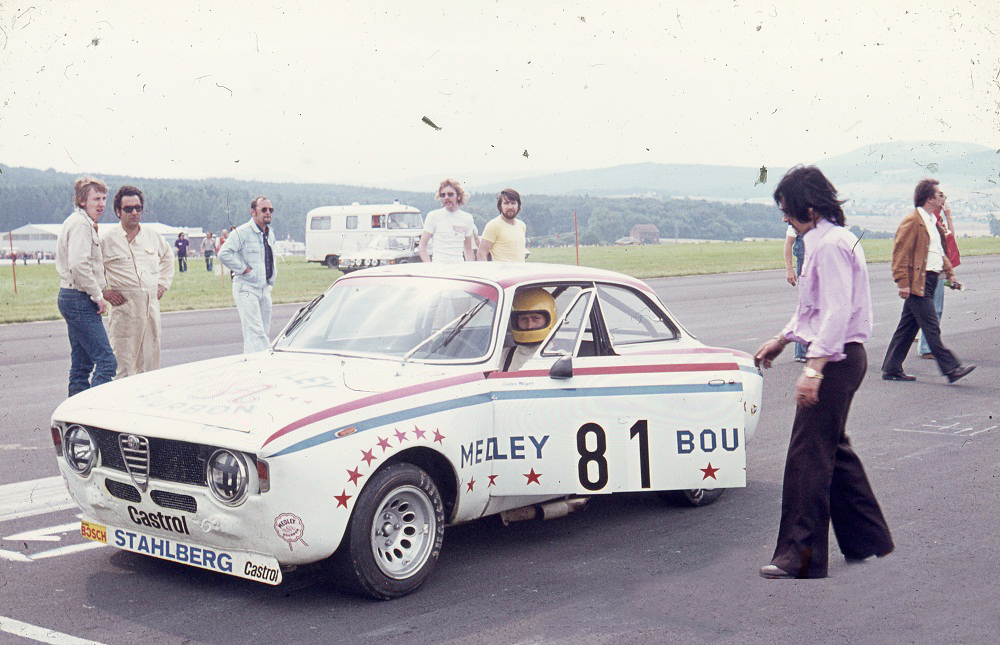

Owner
Bill and Patrick Byrne of Spokane, Washington, USA are the father-and-son race team who debuted the Medley Bourbon GTA at the Monterey Reunion meeting at Laguna Seca in California this August. Bill has had a long history with Alfa Romeos, particularly Giulia GTs and GTVs.
‘I had a friend in college who was drafted to go to Vietnam and he sold me his 1972 GTV when he went,’ says Bill.
I wanted to race a GTA, but it had to have provenance
‘I was dumbfounded at how well it drove – everyone else was driving American muscle – and after he returned and got his car back, I bought one. I wanted to race it, but wound up racing a Corvette instead, and over the years I collected many other Italian cars; Ferraris, Maseratis, other Alfas. Then, as my son Patrick was growing up, he got into dirt bikes and was about to move on to a full-size bike when his mother became nervous about broken bones or much worse. I made him a deal – if you sell your bike, we’ll race sports cars.’
Byrne Jr duly complied and the pair went to race schools, eventually competing in Bill’s 1958 Giulietta Sprint Veloce and winning their class at Monterey, plus a national championship at Austin, Texas. The car’s engine came from Alfaholics, as did the Byrnes’ GTA track-day car, which was why Max Banks was let in on Bill’s oft-expressed dream. ‘I wanted to race a wide- bodied GTA, but it had to have serious provenance.’
With just that, and the American connection in the sponsorship livery, the car found by the Bankses could hardly have been better suited.
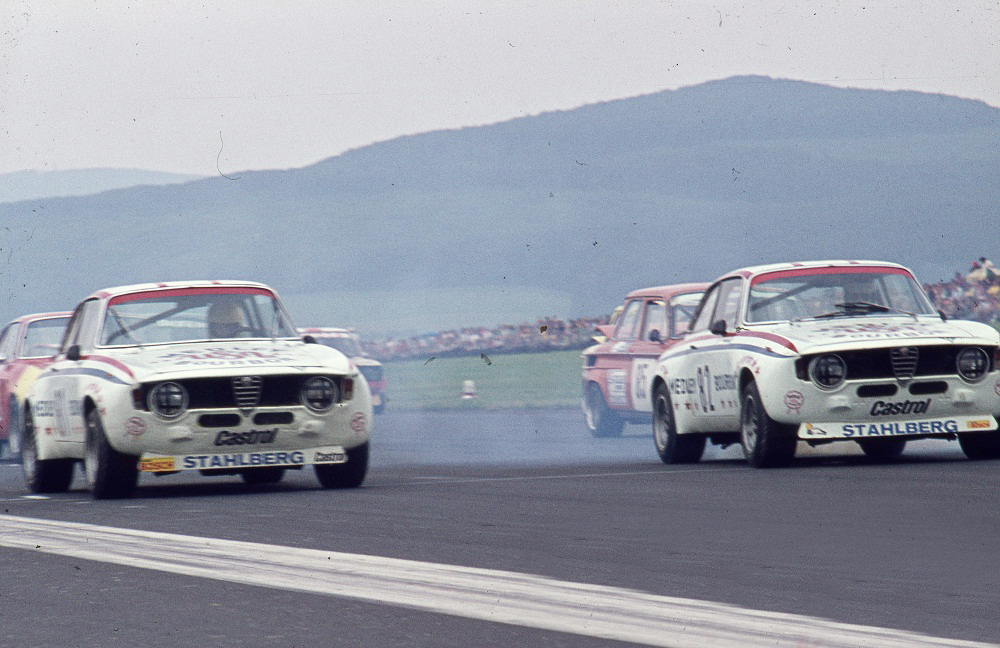

Mechanical Parts
It’s in the mechanical restoration of the car that the conundrum of new versus old reared its head most often. The engine would be newly built – no problem there, firstly because no other car on the grid would be racing with reciprocating parts dating from the mid Seventies, and secondly because the car had evolved through so many engines of different sizes over its race career that the decision meant they weren’t dumping a 1965 (or even 1974) original anyway.
With the build of the engine completed by a trusted Alfaholics supplier, Max and his colleagues were free to concentrate on the rest of the driveline. The job of assembling everything, both off the car and on, went to Brendan Sellens.
‘We rebuilt the gearbox,’ he says. ‘We have our own synchros and bearings made and this car retained the ratios it had always run with. I also did the back axle, with the right ratio from 1974 but a new crownwheel and pinion and a new limited- slip differential to give it reliability on track.’
It’s a big deal to work on such a famous car
‘The bellhousing on the car is magnesium,’ says Banks.
‘It was an original Autodelta part but it was cracked. Rather than use an aluminium reproduction, we had new ones cast in magnesium.’
The same was done for the wheels – hitting 140mph on 40-year-old magnesium wheels was never a sensible option.
Some of the most interesting items had their origins with Dieter Meyer. ‘Dieter installed a Watt linkage to replace the usual sliding-block arrangement found at the rear axle,’ says Banks.
‘We could have replaced it and used conventional suspension, but it was good enough to win the championship, so we’ve stuck with it. Ditto the original-spec small-diameter springs and Group 2 alloy brake calipers, plus as many of Dieter’s drilled components as we could safely re-use or replicate.’

For Sellens, working on the car was a very special experience. ‘It’s been my favourite,’ he reveals. ‘It’s a big deal to work on such a famous car.’
Hours taken: 400
‘on early bodyshells, the front chassis legs are inherently weak where the steering box mounts because they were made of thinner-gauge steel than the later cars. As a result, reinforcement is essential for cars used for competition.’
Max Banks

Stripdown and Jigging
When the car was found it was wearing a red-and- yellow colour scheme and an advanced 1300cc 16-valve engine with magnesium slide-throttle fuel injection – rather different from its Group 2 specification in 1974. Max Banks managed to contact the car’s driver, Dieter Meyer.
He’d been a Stahlberg team mechanic before becoming a driver and he was, therefore, unusually hands-on with car preparation. ‘He’d spent the whole winter of 1973-74 stripping the car, lightening it and doing other modifications,’ says Max. ‘We discovered a few things, asked Dieter about them and he’d say “yes, I did that, and when you remove this other panel you’ll find this,” and sure enough, we’d find what he described.’
He’d spent the whole winter of 1973-74 stripping the car
Once stripped, the shell could be mounted on Alfaholics’ jig and checked for straightness. ‘It wasn’t bad,’ says Max. ‘The only issues we had were with a twist in the roof that needed a couple of pillars to be cut and re-welded when everything was perfectly square.’
With all the exterior panels removed the steel superstructure went away for media blasting.
Hours taken: 400 hours

Panelwork
The Giulia GTA wears aluminium panels over a steel monocoque. Alfaholics works with an aluminium specialist called Darren Welsh for such panelwork, though his expertise has to combine with some interesting approaches to producing an authentic result, as described by Max Banks. ‘This car started off as a narrow-bodied GTA and raced as such for years before the wide-bodied look evolved for 1971. The front and rear wings were cut off in a straight line above the wheels and glassfibre arches fitted with pop rivets. Autodelta created wide-bodied cars by starting with complete wings and cutting them back, so we did too.’
‘The hardest thing about this car was working with the right material,’ says Welsh. ‘First, we had to find it – it’s 1mm Peralumin. Max tracked down the chemical composition of it and I found a supplier in America. It’s harder to work with because it doesn’t hold its shape as well as thicker sheet, and it transfers heat very quickly. We gas-weld aluminium, which is a pretty specialised job even on normal-thickness panels.’
The hardest bit was working with the right material
Welsh and his team also test-fitted everything from GRP wheelarches to glass, lights and trim to ensure the work was 100 per cent accurate before it went for painting. As the corners of any competition car are the most likely areas to suffer damage, Max Banks duplicated the unique Stahlberg-made glassfibre pieces.
‘We took moulds of them,’ he says, ‘to lay up replicas.’ Unlike the Stahlberg team, Banks and Bill Byrne didn’t hide the pop-rivets under body filler. This and the lighter arches led to a 15kg weight saving.
Hours taken: 500
The high mass of the live rear axle in comparison to the light aluminium body makes the spring rate critical,’ says Andrew. ‘We created a formula for calculating spring rate by inputting data specific to each car we build. the extra grip the wide wheels add affected things, but the first test proves the formula works.

Paint
This car’s unusual and memorable livery came about through a deal between Hamburg businessmen. Carl Hertzberg, an entrepreneur, had spotted a fondness in the German market (not least among
American GIs stationed there) for bourbon. He negotiated a European distribution deal with Charles Medley, proprietor of a small-batch distillery of high- quality bourbon in Kentucky, and soon ended up buying everything that Medley could spare.
Hans Stahlberg needed a sponsor for the 1974 season, having previously run in the yellow of Bajella Bananas, another Hamburg importer. Hertzberg entered fully into the spirit of things, handing out bottles of Medley to winning drivers via a stars ’n’ stripes-clad character on stilts known as Uncle Sippin’ Sam. But after several resprays and with the sister car still lost, there was nothing for the painter to copy. ‘We knew we had to start with the stripes,’ says Andrew Banks, Max’s elder brother.

‘We outsource the paint but Max and I were over there a lot during the phase when we marked out the stripes. It was tricky getting them neat. To end up with all three colours at the same level we masked the stripes, painted it white, then masked the white paint and one stripe on each side and painted the red, then when that was dry, masked the red stripe and uncovered the other one so we could paint the blue stripe. The paints were custom-tinted to match the vinyl decals – matching the vinyl to the paint would have been much harder.’
We spent three months designing the decals
Creating the decals themselves was even more involved. ‘We spent three months designing them, using the old photos for reference,’ says Andrew. ‘We had to scale the lettering and stars by using measurements on the car. For example, the wheelbase allowed us to calculate the spacing of the stars along the side.’
Hours taken: 350

Assembly
As the restoration progressed, a deadline formed and began to exert pressure on the team. The Byrnes wanted to reveal the car at Laguna Seca in August 2014, which meant that the planning of the remaining
work at Alfaholics had to be as tight as possible. The lengthy paint and decal process would only leave enough time for completion if everything was ready to go as soon as the shell returned from the paintshop.

Steve Kingett, described by Max Banks as ‘the ultimate safe pair of hands’, oversaw the assembly process and worked with Brendan Sellens to have as many of the sub-assemblies built up and ready to go on as possible. This was more than just a Meccano job, as Kingett describes, ‘The Autodelta suspension parts changed the roll centres and the steering geometry, so even before we had the car back Brendan was spending hours measuring things, as well as the work in drilling or lightening brackets and so on.’
I spent two weeks lying on my back under the dash
Once the shell returned it was quickly fitted with enough running gear to make it mobile and Kingett got to work inside with another time-hungry job: wiring.
‘I pre-planned as much as possible,’ he says, ‘but you still have to sit in the car and lay out each component and relay, and the thin-wall race cables, then start making it section by section. The hardest thing was doing all this on an immaculate, newly painted shell… I spent two weeks lying on my back under the dash but you have to be careful everywhere, so we don’t wear zips and we never lean on the outside of the car at all.’
Many original items could in theory have been re-fitted – they were intact – but with a father’s eye on the safety of a son driving at high speed, pragmatic decisions were necessary. The steering box was rebuilt into a new casing machined from billet, because the originals tend to crack. Perhaps the least likely original feature to survive was the aluminium roll cage – light, but a crazy idea in a 21st-century context, and worth a 30kg penalty to replace it with a T45 steel item.
Only ten weeks after the bare shell arrived back in the workshops Max Banks set the car up on the rolling road, tweaked the steering geometry and booked a track test. The result? Max, an experienced racer, says, ‘It’s the quickest GTA I’ve driven. It needed so little after its track day – barely nothing more than a wipe-down– we were able to ship it to America a week early.’
Hours taken: 500

1600 GTA Corsa ex-Stahlberg Racing
Ex-Dieter Meyer Stahlberg racing 1974 DRP championship winning car.

